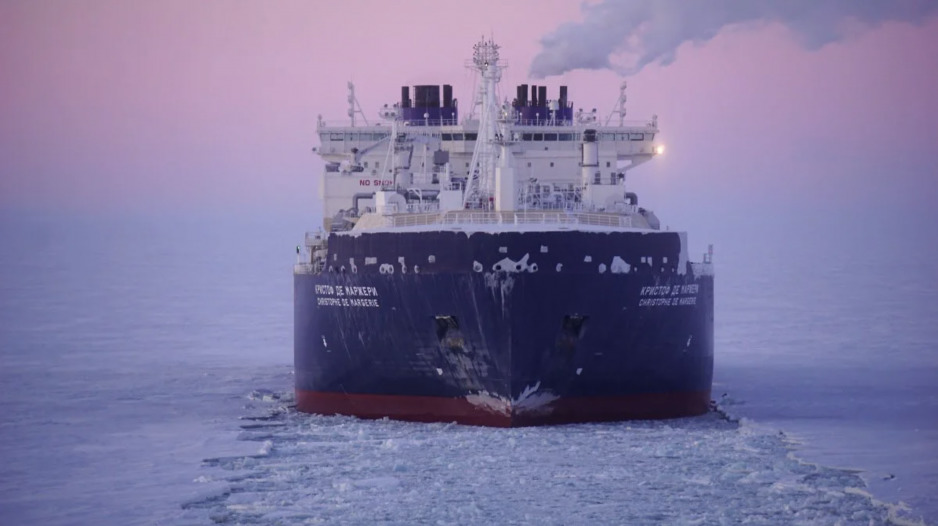An Arctic LNG tanker is in drydock to repair damage from a winter test voyage
The damage to the Nikolay Yevgenov, which was sailing without an icebreaker escort, underscores that navigation in the Arctic remains challenging, even as sea ice retreats.

A highly ice-capable natural gas carrier suffered damage to one of its engine pods during a first-of-its-kind winter transit without icebreaker support on Russia’s Northern Sea Route. The Nikolay Yevgenov has arrived at a dry dock in France last month to undergo repairs, highlighting that Arctic navigation remains challenging.
Sea ice may be melting at record rates, but winter in the Arctic Ocean remains a formidable obstacle even for highly specialized ice-class vessels.
In January Russian natural gas company Novatek sent two Arc7 ice-class natural gas carriers on test voyages to deliver liquefied natural gas from its Yamal LNG plant in the Russian Arctic to China via the Northern Sea Route. Christophe de Margerie departed first followed by sister ship Nikolay Yevgenov a day later. In contrast to previous winter transits, the ships navigated independently without the assistance of Russian nuclear icebreakers.
Currently the navigation season on the Northern Sea Route lasts from July until December. But Novatek and its shipping partners hope to regularly ship LNG to Asia year-round where natural gas prices are generally higher than in Europe — which so far has been the sole destination for winter shipments.
According to Novatek, both LNG carriers encountered average ice conditions and traveled along the Northern Sea Route at a record pace for most of the trip. However, part way through the voyage observers noted that Nikolay Yevgenov, owned and operated by a partnership of Teekay LNG and China LNG Shipping Holdings, slowed down to as little as three knots based on satellite-based vessel tracking.
At the time, Novatek and Teekay did not comment on speculations that the ship may have struck an ice ridge and suffered damage to its propulsion system. Shipping experts surmised that any damage could likely be resolved in port with the help of service engineers. The vessel subsequently did not return to the Russian Arctic via the Northern Sea Route but began its voyage west via the longer, but less challenging, Suez Canal route.
Back in Europe for repairs
Late last month the vessel arrived in Brest, France where it will spend at least 20 days at the Damen dry dock to repair damage to the central of its three azimuth thrusters. In this type of system the marine propeller is placed in a pod which can be rotated horizontally allowing for greater maneuverability and negating the need of a rudder. This configuration is frequently used on ice-class vessels and icebreakers.
More than a month after the incident, Teekay’s chief executive, Mark Kremin, acknowledged that the vessel had sustained damage and needed repairs during an investor call. While in dry dock the ship will also undergo regular maintenance and repairs.
“It looks like we’ve got some damage. We’ve had it on one of the pods, which we use […] for propulsion instead of normal propellers. So the ship will be in the dry dock starting tomorrow [February 27th] , and we’ll get it fixed.”
It remains unclear if the entire azimuth unit will have to be replaced, which takes about a month, or if it can be repaired.